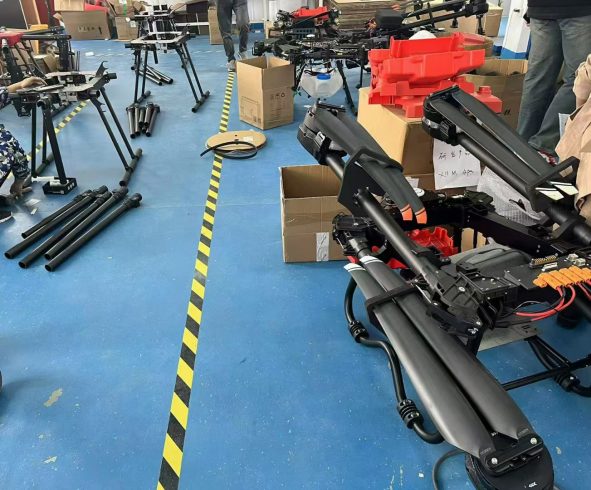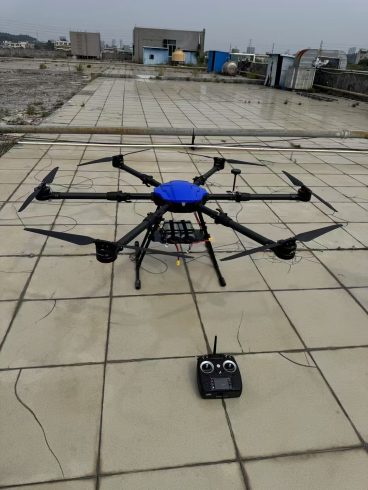![图片[1]-Remote Monitoring of Drone Sprayers: Real-Time Precision for Modern Farms-msoen](https://www.msoen.com/wp-content/uploads/2025/04/27fe7401e7184641-1024x768.jpg)
As drone sprayers become indispensable tools in precision agriculture, the ability to monitor and control these systems remotely has emerged as a game-changer. Remote monitoring empowers farmers, agronomists, and drone operators to oversee spraying operations from miles away, ensuring efficiency, safety, and compliance while minimizing on-site labor. This article explores the technologies, benefits, and future trends shaping remote monitoring in agricultural drone spraying.
What Is Remote Monitoring for Drone Sprayers?
Remote monitoring refers to the use of software, sensors, and communication networks to track and manage drone sprayers in real time. Operators can view live data streams, adjust flight paths, and troubleshoot issues without being physically present in the field. This capability is particularly transformative for large-scale farms, multi-drone fleets, or operations in hazardous or hard-to-reach terrain.
Key Components of Remote Monitoring Systems
- Real-Time Telemetry
- Flight Data: Altitude, speed, battery levels, GPS coordinates, and remaining spray volume.
- Environmental Metrics: Wind speed, temperature, humidity, and UV index.
- Live Video & Sensor Feeds
- FPV (First-Person View) Cameras: Stream live footage of crop coverage and spray patterns.
- Multispectral Imaging: Monitor plant health metrics (e.g., NDVI) during spraying.
- Cloud-Based Control Dashboards
- Centralized platforms display data from multiple drones on maps, charts, and alerts.
- Enable operators to reroute flights, pause spraying, or adjust nozzle settings remotely.
- Predictive Analytics
- AI algorithms analyze historical and real-time data to predict mechanical failures, battery drain, or spray drift risks.
- Secure Communication Networks
- 4G/5G, LTE, or satellite links ensure stable connectivity even in rural areas.
- Encrypted data transmission protects against cyber threats.
Applications of Remote Monitoring in Agriculture
- Large-Scale Farm Management
Monitor fleets of drones spraying thousands of acres simultaneously, with live updates on progress and chemical usage. - Hazardous Environments
Safely manage spraying in areas exposed to pesticides, extreme heat, or unstable terrain (e.g., flooded fields, volcanic slopes). - Precision Compliance
Automatically log spray data (time, location, chemical rates) for regulatory audits or organic certifications. - Training & Collaboration
Experts can remotely guide on-site operators, troubleshoot issues, or demonstrate best practices via shared dashboards.
Benefits of Remote Monitoring
- Operational Efficiency
- Reduce Downtime: Instant alerts for low battery, tank refills, or mechanical issues.
- Optimize Routes: Adjust flight paths in real time to avoid overlaps or missed zones.
- Cost Savings
- Labor Reduction: One operator can manage multiple drones across vast areas.
- Fuel/Chemical Waste: Minimize overspray and redundant applications.
- Enhanced Safety
- Limit human exposure to chemicals or dangerous terrain.
- Emergency protocols (e.g., auto-landing) trigger remotely if connectivity is lost.
- Data-Driven Insights
- Correlate spray data with yield maps, soil tests, and weather history for future planning.
- Identify underperforming drones or nozzles for maintenance.
Technologies Enabling Remote Monitoring
- IoT Sensors
- Track spray pressure, droplet size, and tank levels.
- Monitor motor health and vibration patterns to predict failures.
- Edge Computing
Process critical data on the drone to reduce latency when connectivity is spotty. - Blockchain
Securely store spray records and compliance logs in tamper-proof ledgers. - Augmented Reality (AR)
Overlay spray coverage maps onto live camera feeds for operators wearing AR headsets.
Case Study: Remote Management of a Vineyard Fleet
A California vineyard used remote monitoring to coordinate three drones spraying 200 acres of steep, terraced slopes. Key outcomes:
- Real-Time Adjustments: Operators in a central office modified flight paths during sudden wind shifts, avoiding drift into organic zones.
- Predictive Maintenance: AI flagged a motor overheating issue in one drone, preventing a mid-field crash.
- Labor Savings: Reduced on-site staff by 75% while doubling daily coverage.
Challenges & Solutions
- Connectivity Gaps
- Challenge: Rural areas often lack reliable 4G/5G coverage.
- Solution: Hybrid networks using LTE, satellite, and mesh radio systems.
- Data Overload
- Challenge: High-resolution video and sensor data strain bandwidth.
- Solution: AI filters irrelevant data, transmitting only critical alerts.
- Cybersecurity Risks
- Challenge: Hackers could hijack drone controls or steal farm data.
- Solution: End-to-end encryption and multi-factor authentication.
Future Trends in Remote Drone Monitoring
- Autonomous Swarms: AI-managed fleets that self-coordinate based on real-time field conditions.
- 5G Integration: Ultra-low latency for instant control of high-speed spraying drones.
- Digital Twins: Virtual replicas of fields and drones for simulation-based training and planning.
- Voice Commands: Operators control drones via natural language (e.g., “Pause spraying in Sector 5”).
Conclusion
Remote monitoring transforms drone sprayers from standalone tools into intelligent nodes within a connected agricultural ecosystem. By enabling real-time oversight, predictive maintenance, and data-driven decision-making, this technology empowers farmers to maximize efficiency, reduce risks, and meet sustainability goals—all from the convenience of a desktop or smartphone.
As connectivity, AI, and automation advance, remote monitoring will become the standard for drone spraying operations, bridging the gap between precision agriculture and scalable, future-ready farming.











暂无评论内容